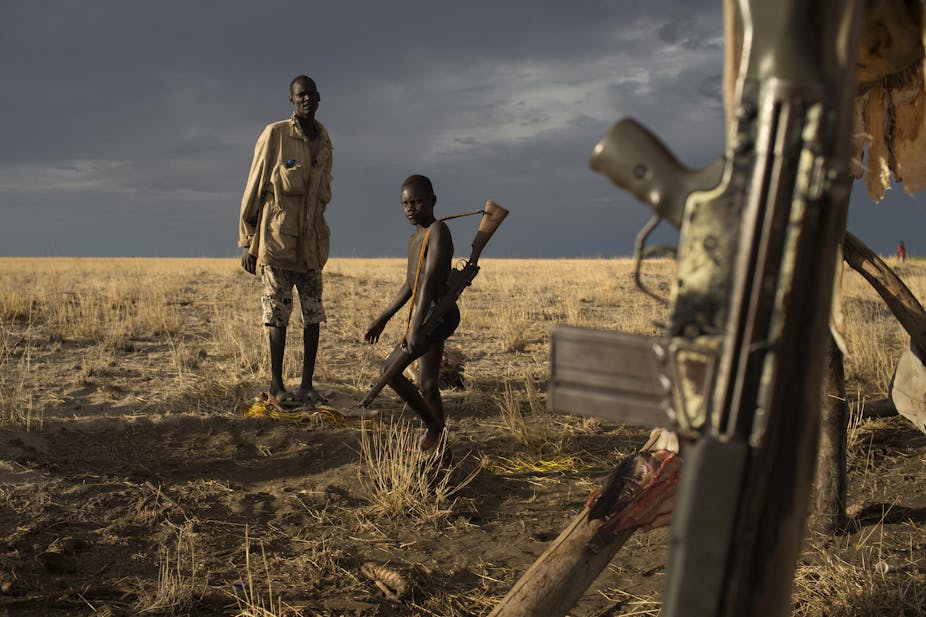The recent conflict in Laikipia in central Kenya is a complex web of violence that’s been a feature of the region as well as its neighbouring counties for the last two decades.
Laikipia is inhabited by both farmers and pastoralists who occupy its northern, eastern and western constituencies. Most of the conflict happens to the north of the county, but it frequently extends to the west and the east.
The seasonal violence in Laikipia can be attributed to a range of factors. These include its location and geography as well as the cynical manipulation of politicians. But the biggest factor is the contradictory attitudes held by farmers on the one hand and pastoralists on the other.
Almost 50% of the Laikipia county land mass is owned by large scale ranchers – less than 30 of them. The county borders the pastoralist counties of Baringo, Samburu and Isiolo, where farmers own large herds of cattle. The herders perceive a lot of land owned by the ranchers as being idle.
It’s common knowledge in Kenya that pastoralists take pasture, water and grasslands for their livestock wherever they can find it. Because pastoralism is livestock driven, herders go to extremes for their animals. This explains why they habitually invade Laikipia in the dry months of January to April, creating conflict every time they do so.
The Pokots and the Tugens in Baringo County, and the Samburus and Turkanas in both Isiolo and Samburu counties have contributed significantly to the conflict in Laikipia County.
The recent spate of violence has been devastating for the county which is a leading destination for thousands of tourists from across the globe.
The Laikipia conservancies are home to some of the rarest animal species in the world such as the white rhino. The ranches also produce some of the best beef in the world.
All this may be compromised if the perennial conflict is not addressed comprehensively.
Armed bandits and meddling politicians
The availability of illegal arms also contributes to the escalation of violence.
More than that, there are a number of contributory factors that make the area prone to violence. This includes the fact that the entire region is marginalised. Poverty, poor infrastructure and divergent cultural values fan the flames of discord among local people.
The areas geography makes it a conducive environment for castle rustling and banditry. It features the hostile Suguta Valley terrain in Samburu County as well as wide open spaces. This makes it almost impossible for police to operate in an area flooded with well-trained bandits who have easy access to superior weaponry. There’s little commitment from the officers who are posted to this hardship area to fight crime.
The charged environment has also meant that residents have become easy pickings for manipulative politicians. Politics has come into play in the region as a result of poor, marginalised communities feeling forgotten by the state. They are therefore easily influenced.
A great deal of the latest round of violence was triggered by politicians armed with information that the 99-year leases held by ranchers in Laikipia were about to expire. They moved in to incite herders to invade and destroy the affected ranches with the ultimate hope of occupying them for themselves.
Incitement by politicians is the real reason herders destroyed a lodge on Sosian Ranch before killing its white manager Tristan Voorspuy.
Another factor that contributes to the conflict on the Laikipia plains is the unoccupied land owned by absentee landlords who leave their land lying fallow for years. These tracts are a heady temptation for pastoralists in search of open spaces.
Ethnicity is also a factor. Laikipia is a cosmopolitan county which is home to different communities who don’t share the same values. The Samburus own large community lands that are furrowed but their farmers till small holdings of three to five acres each: these small holdings are perpetually invaded by herders during the dry season.
Recovery plan
Any recovery plan for the region should involve a massive lifestyle shift. Providing formal education for children would be a good start because it would provide them with a means to escape a pastoralist lifestyle.
It must also include the building of roads, hospitals, water boreholes and livestock markets.
Finally, the county and national governments must enable access to communication networks, ensure the security of citizens, and disarm and demobilise the armed bandits.

